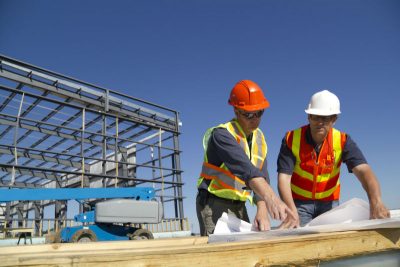
There are industries that come and go throughout the world, but some will simply stay around forever. We most often see these comings and goings in the tech industry. Can you think of anyone that has a VCR? Or even more recent, a 3D TV?
The world, however, is always going to need the construction industry. There are always new buildings to be built, renovations to undergo, and other places that need to be torn down.
Even though the construction industry is here to stay, that doesn’t mean that it’s undergoing a number of changes itself. “Just add water” houses are still years away from being properly developed, but there are a number of other changes to keep your eye on.
There Aren’t Enough Workers
In many countries around the world, the construction industry is facing a manpower shortage. The UK has said it is facing a huge recruitment crisis, needing nearly 170,000 workers over the next five years. The U.S. is facing similar problems, with some estimates saying the shortage ranges around half a million workers.
Even though the industry itself is booming, there aren’t enough workers to fill the jobs. This can be attributed to a healthy economy, with consumers being able to spend more on bigger projects. You would think more work would mean more workers, but many companies are struggling to fill those gaps.
Some say the reason is that people are not keen on joining a physically demanding industry, choosing instead to feel more comfortable in an inside job.
Many Companies Now Target Women
Construction has long been a male-dominated industry, both in the field and in the office. Now with an impending recruiting shortage, companies are turning towards women to help fill those gaps.
The number of women in construction, surprisingly, has stayed roughly the same over the last two decades. While statistics vary slightly, those numbers usually over around 9-10%.
Women have been quite hesitant to enter the construction field and the reason isn’t all too surprising: sexism and perception. Women who do enter the industry tend to gravitate towards office positions with only a small number choosing to head to the construction site itself.
More Technology
Despite the impending labor shortage, construction companies are continuing to improve their craft and make leaps and bounds in the 21st century. Of course, people are still using good ol’ fashioned hammers and nails, but there are a number of improvements.
Drones are making a huge footprint, being used to survey construction sites from a bird’s eye view. Previously, companies had to use expensive helicopters to get the view they wanted but now a drone will do the trick.
Others are using virtual and augmented reality for training videos. These can be used to train on equipment as safety regulations as well. It saves time and keeps people out of active danger.
Green Trends
Going green is sweeping the world. Even if you aren’t a tree-hugging hippy, you might prefer companies that do as much as possible to not damage the environment.
Renewable energies are playing a big role, helping lower consumption and the carbon footprint. With some renewable energies such as solar becoming much cheaper, many customers and companies are making use of them.
While this trend is still slowly gaining ground, many consumers are demanding companies hold a certain policy for their actions.
Changing Material and Transportation Costs
Material costs tend to rise and while this may seem like bad news, these materials are usually of much better quality and are better long-term for the value of the house or building. Materials like self-heating concrete, transparent aluminum and more will eventually become mainstays in the industry.
In addition, many companies are opting to rent out vehicles long-term for certain projects. This cuts down on overall costs and ensures companies are saving money where they can.
More Infrastructure Investment
Driving throughout some parts of the United States, it looks like our highways and interstates were beaten with Thor’s hammer. Thankfully, more and more emphasis is put on infrastructure and smart city development.
These projects are huge and investments are ranging in the trillions of dollars. Hopefully, this is a trend that will continue over the next few years.










